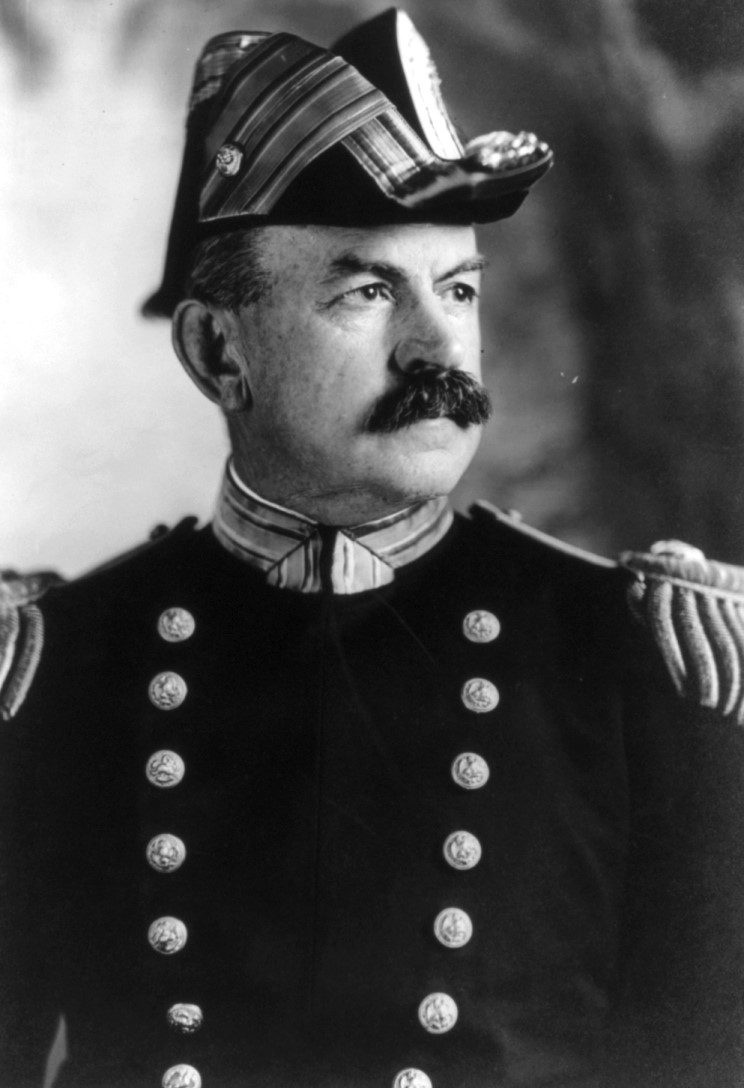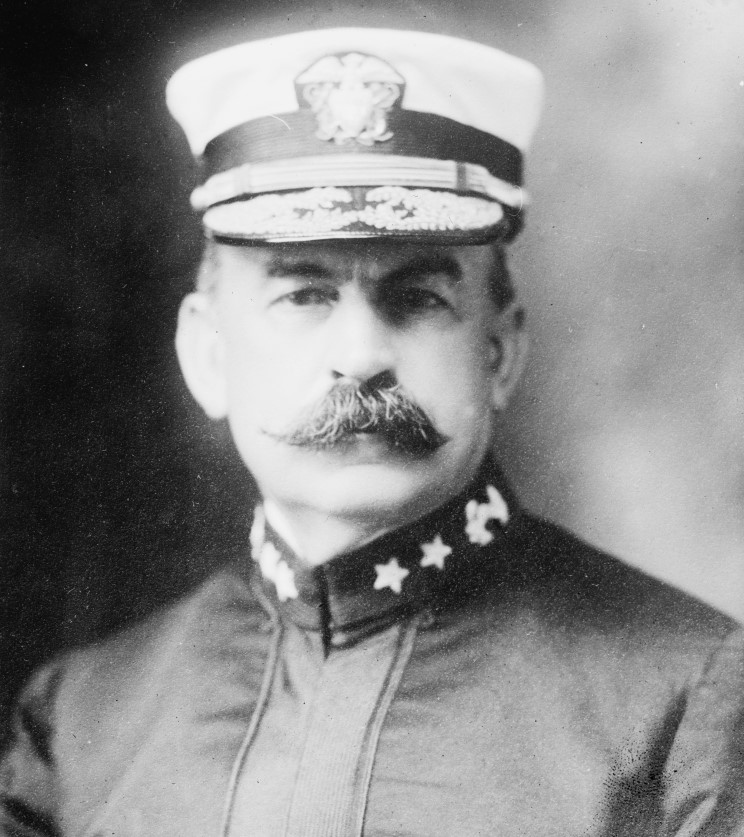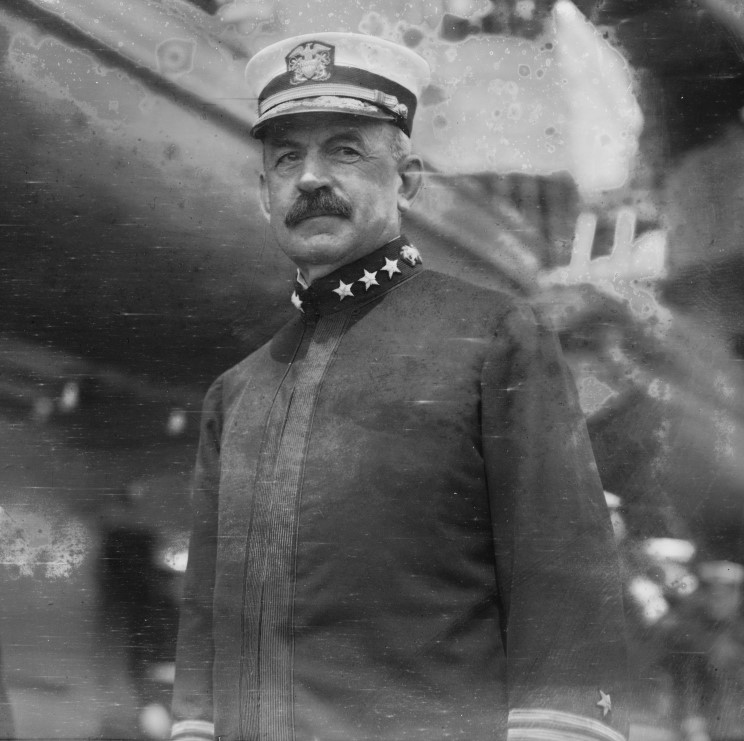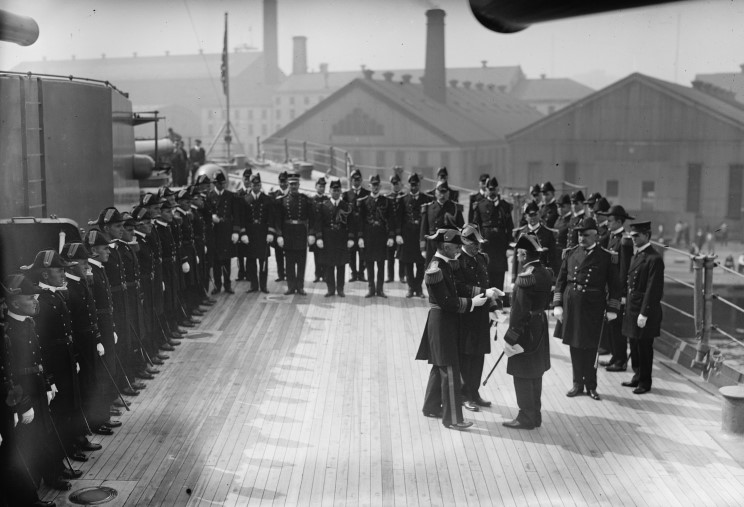Admiral Frank Friday Fletcher USN |
|
(1855-1928) |
 |
Admiral Frank F. Fletcher USN
|
Frank Friday Fletcher was born on 23 November 1855 in Oskaloosa, Iowa. He graduated from the U.S. Naval Academy in 1875 and spent the next year as a Midshipman on USS Tuscarora. Promoted to Ensign in July 1876, he had sea duty on the sloops of war Portsmouth, Plymouth, Lackawanna and Constellation before participating in USS Ticonderoga's voyage around the World in 1878-1881. Fletcher advanced to the rank of Master (later Lieutenant Junior Grade) in April 1882 and was next assigned to the Hydrographic Office in Washington , D.C. In July 1884, he reported to USS Quinnebaug for service in European waters. After ordnance training in late 1887, he had five years' duty at the Bureau of Ordnance, during which time he was promoted to Lieutenant and made notable contributions to gun mechanism design and shipboard navigation. In 1892-1895 Fletcher commanded USS Cushing, based at the Torpedo Station, Newport, Rhode Island, and developed the Navy's first torpedo warfare doctrine. He then served in the battleship Maine before returning to the Newport Torpedo Station in October 1896. After a brief tour as Assistant Chief of the Bureau of Ordnance in the spring of 1898, Lieutenant Fletcher became commanding officer of the converted yacht Kanawha. From October 1898 to July 1901 he commanded the surveying ship Eagle and, in March 1899, was promoted to Lieutenant Commander. In the fall of 1901, Fletcher returned to ordnance duty and was closely involved with torpedo warfare. A year later he became Chief of Staff of the Asiatic Fleet and later in 1905 assumed command of the cruiser Raleigh. Commander Fletcher attended the Naval War College in mid-1907 and was assigned to Navy's General Board during the next year. He was promoted to Captain in May 1908. From November 1908 to March 1910, he commanded the battleship Vermont. In spring 1910, Fletcher became the Secretary of the Navy's Aid for Material. While in that post, he reached the rank of Rear Admiral. In 1912-1914, he commanded battleship divisions of the Atlantic Fleet. In April 1914 Rear Admiral Fletcher led U.S. Navy forces during the landings at Vera Cruz, Mexico, receiving the Medal of Honor for his "distinguished conduct in battle". In September 1914, Rear Admiral Fletcher began two years as the Atlantic Fleet's Commander in Chief, and was elevated to the rank of Admiral in March 1915. He was a member of the General Board, the Army-Navy Joint Board and the War Industries Board in 1916-1919, and was awarded the Distinguished Service Medal for "meritorious service" during World War I. Retired on 23 November 1919 with the rank of Rear Admiral (as was customary at that time), he subsequently served as an official advisor on contemporary defense issues. Frank Friday Fletcher died on 28 November 1928 in New York City and is buried in Arlington National Ceremony, Arlington, Virginia. |
(Text courtesy of the USNHC)
|
Medal of Honor Citation |
|
For distinguished conduct in battle, engagements of Vera Cruz, 21 and 22 April 1914. Under fire, Rear Adm. Fletcher was eminent and conspicuous in the performance of his duties; was senior officer present at Vera Cruz, and the landing and the operations of the landing force were carried out under his orders and directions. In connection with these operations, he was at times on shore and under fire.
|
 |
Read Admiral Frank F. Fletcher USN
|
 |
Vice Admiral Frank F. Fletcher USN
|
 |
September 1914: Admiral Frank F. Fletcher USN accepting the command of the U.S. Atlantic Fleet.
|
 |
September 1914: Admiral Frank F. Fletcher USN (center) after accepting command of the U.S. Atlantic Fleet.
|
USS Fletcher DD-992 |
||
Page published Aug. 3, 2008 |